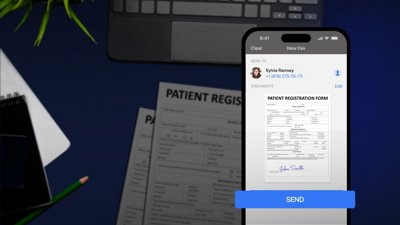Talking to The Wall Street Journal, AT&T Chief Technology Officer John Donovan said he and other executives flew to Apple's Cupertino, Calif., campus to give the handset maker a "crash course in wireless networking." With regular return meetings at Apple, AT&T employees helped the iPhone designers create new technologies to limit the strain on the wireless provider.
"Apple rejiggered how its phones communicate with AT&T's towers," the report said. "As a result, the phones now put less of a load on the network for such simple tasks as finding the closest tower or checking for available text messages."
Donovan told the Journal that Apple's designers are now "in a Master's class" on networking, having learned the basics and worked with AT&T to improve the iPhone dramatically. Exactly what changes were made, and whether they were hardware or software based, was not revealed.
The article also revealed that AT&T executives set up a 100-day play in December of 2009 to improve the company's network in large cities where users most commonly experience dropped calls. At least one study found that the company's efforts have paid off: A performance test released in February found that AT&T's 3G network speeds had improved by 84 percent.
But the Journal also noted Tuesday that AT&T is still "racing" to improve its network as Apple is rumored to be working on a CDMA capable iPhone that could be headed to the Verizon network as soon as this year.
In January, Apple executives made a clear effort to demonstrate they are happy with their partnership with AT&T. The company also aimed to downplay speculation that the iPhone would become available on multiple carriers in the U.S. Apple Chief Operating Officer Tim Cook said multi-carrier strategies are not the best option for every country.
AT&T's exclusive mobile partnership with Apple is expected to end this year, with many observers expecting the company to begin working with Verizon Wireless and/or perhaps T-Mobile, either of which would require new iPhone hardware designed for those company's mobile networks.
AT&T itself has regularly announced mobile infrastructure progress and future plans to improve and expand its mobile network in the US in order to better support new and existing iPhone users. The company also announced last week that its 3G MicroCell hardware would see a nationwide rollout beginning in mid-April. The service offers relief from cell phone "dead zones" by acting as a 3G receiver when hooked up to a broadband Internet connection.
AT&T has also met competitive price cuts set by rivals. The companies have also engaged in their own advertising campaigns which have been highly critical of the other.
 Neil Hughes
Neil Hughes






-m.jpg)






 Wesley Hilliard
Wesley Hilliard
 Oliver Haslam
Oliver Haslam
 Christine McKee
Christine McKee
 Amber Neely
Amber Neely
 Andrew Orr
Andrew Orr

 Sponsored Content
Sponsored Content







46 Comments
I think it was few months ago when one of UK iPhone carriers discovered an issue with how the iPhone handles its network connection that caused network overload problems. If I remember correctly they said they are sending a team to inform AT&T about the problem and solution. It seems that AT&T is forwarding the solution to Apple.
AT&T should be run (not necessarily owned) by Apple.
I was there for the CTIA convention, and roamed onto their network from Canada on Rogers. The dropped calls were terrible, losing network service every day while outside and repeated delays in SMS of up to 3 hours in some cases.
The biggest headache was landing in Chicago and Washington, there was no service until i actually went in and selected ATT from the carriers listed. Typically the devices should automatically find the service based on the roaming list in the device.
Pretty bad if you ask me, and my travelling partners Blackberry had issues as well, this isn't a Apple issue as much as an ATT network issue.
I was there for the CTIA convention, and roamed onto their network from Canada on Rogers. The dropped calls were terrible, losing network service every day while outside and repeated delays in SMS of up to 3 hours in some cases.
The biggest headache was landing in Chicago and Washington, there was no service until i actually went in and selected ATT from the carriers listed. Typically the devices should automatically find the service based on the roaming list in the device.
Pretty bad if you ask me, and my travelling partners Blackberry had issues as well, this isn't a Apple issue as much as an ATT network issue.
And we complain about Rogers!
Granted, Rogers isn't the cheapest, but I've always found their service excellent.
I remember hearing about some issue related to communication proticals and packet size months ago. I was from the UK as noted by another poster. The iPhone was doing small hit and run communications that left active connections hanging until they timed out. This filled the network with dead connection tieing up spots choking the network. The solution would be a software one as the chips are similar if not the same as other phones. It in the software where it tells the chips how to talk to the towers/network.
Hopefully this fix will be in the next OS update.